- The Quits Rate Is Normalizing Suggesting To Some Old Guard CEOs It’s Time To End Remote Work
- NYC Metro Public Transportation Remains Down By Roughly One-Third Indicating WFH Is Entrenched
- Misuse of Terminology: Most Discussions About Remote Work Are Really About Hybrid Work
Lately I’ve been reading a lot about companies forcing workers to return to the office (RTO) after 5 years of hybrid or remote work from home (WFH). Why the recent change in policy? Part of it has to do with the drop in the quits rate. Workers are less likely to leave their jobs now than a few years ago and many companies have many years remaining on office leases and want to use them. My small town in Connecticut was besieged by workers like me moving further from the central business districts (i.e., Manhattan) coming out of the pandemic. Of course that nationwide phenomenon made suburban and exurb housing prices soar, overwhelming town services (this is one of the reasons why property taxes are soaring too). I continue to be curious whether the intensity of the outward geographic push enabled by WFH was sustainable. It doesn’t look like it, but it also doesn’t appear likely we will see a retraction to pre-pandamic patterns either.
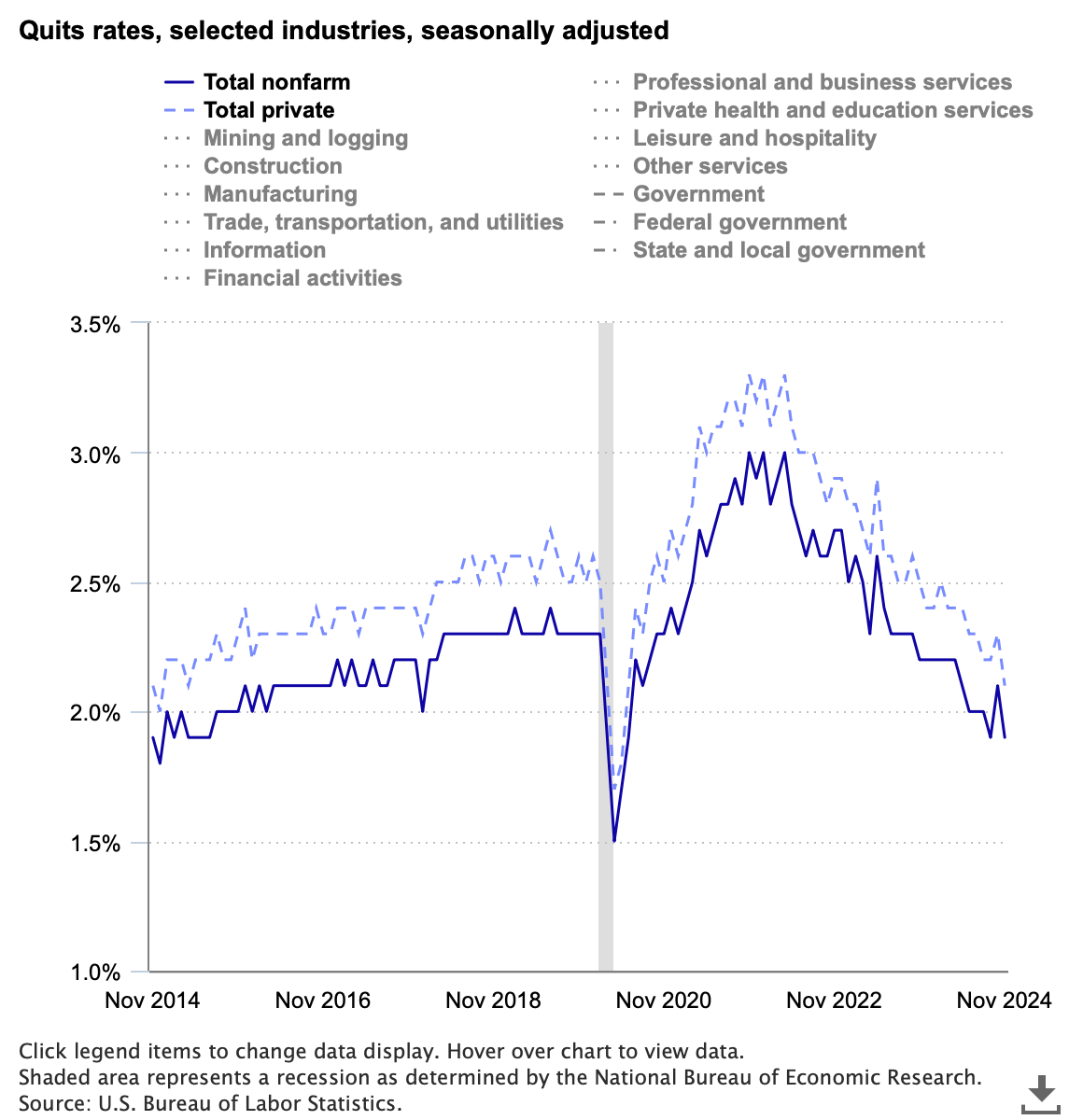
The quits rate is normalizing.
I’ve been following a labor economist lately, Kathryn Anne Edwards, who articulates complex economic issues very clearly. She talks about why companies are bringing back RTO in this terrific instagram post. McKinsey says hybrid work is here to stay.
Jamie Dimon Loves To Pontificate About WFH
U.S. business leaders are trying to figure out WFH in real time. The CEO of the largest U.S. bank and one of the world’s largest banks loves to talk about this topic. Afterall, he has 300,000 employees. Although there is no tangible evidence that workers are more productive in the office than at home, it is an important issue to many Fortune 500 execs. Here are some headlines from Jamie who has been pushing RTO for four years.
- April 2021 Wall Street Banks That Demanded Workers To Return To Their Offices May Have To Change Their Plans Due To Delta Variant
- July 2023 JPMorgan CEO scolds managers who work from home
- February 2024 The executive hubris driving five-day in-office mandates
- September 2024 Jamie Dimon is bothered by federal employees not working in their D.C. offices 5 days a week
- November 2024 Jamie Dimon says the next generation of employees will work 3.5 days a week and live to 100 years old
- January 2025 JPMorgan Is Planning a Five-Day Return-to-Office Policy
WFH v RTO Google Search Trends
Google searches of WFH dominate RTO coming out of the pandemic. There was a short uptick of RTO in January 2025 when companies started to roll out RTO policies for employees but interest in WFH continued to dominate search.
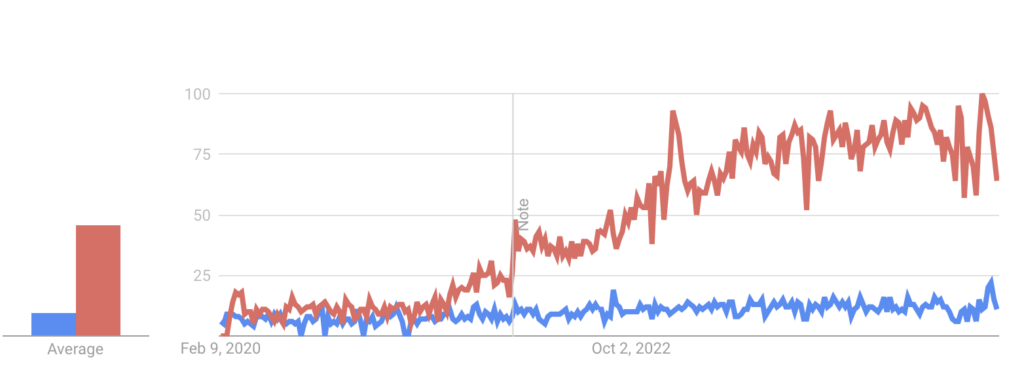
Differences Between WFH Versus RTO
WFH Perceived Advantages
- Less Office Space For Company To Maintain
- Improved Quality Of Life For Employees (Less Commuting)
- Corporate Culture Is Overrated
- Employees Are More Efficient At Home
RTO Perceived Advantages
- Utilize Existing Office Space
- Improved Quality Of Life For Employees (Get Out Of The House)
- Corporate Culture Is Essential
- Employees Are Less Efficient At Home
When The Topic Of Remote Work Is Broached, Hybrid Is What Most Are Actually Thinking
There is really a misuse of commuter nomenclature floating around. There are three types of commuters:
- 100% Remote
- Hybrid – some combination of Remote and Office
- 100% Office
The remote work discussion seems to be predominantly about how many days workers commit to coming in the office and that is the very definition of Hybrid. 100% remote workers are probably only 10-15% of total workers.
The WFH Impact On Housing
Early on in the WFH phenomenon, I anecdotally observed that New York Metro commute times expanded but trips to the central business district fell. MTA is the largest transportation network in North America. The drop in commuting is evident in the Metropolitan Transportation Authority (MTA) ridership numbers.
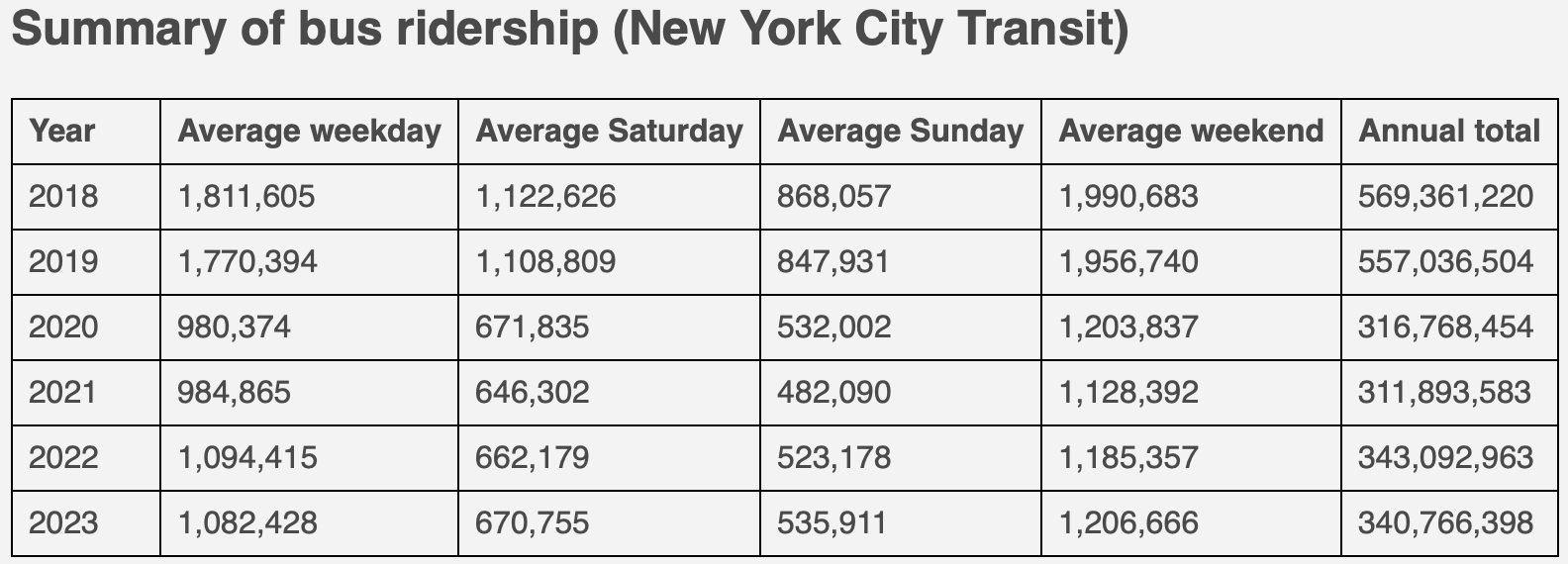
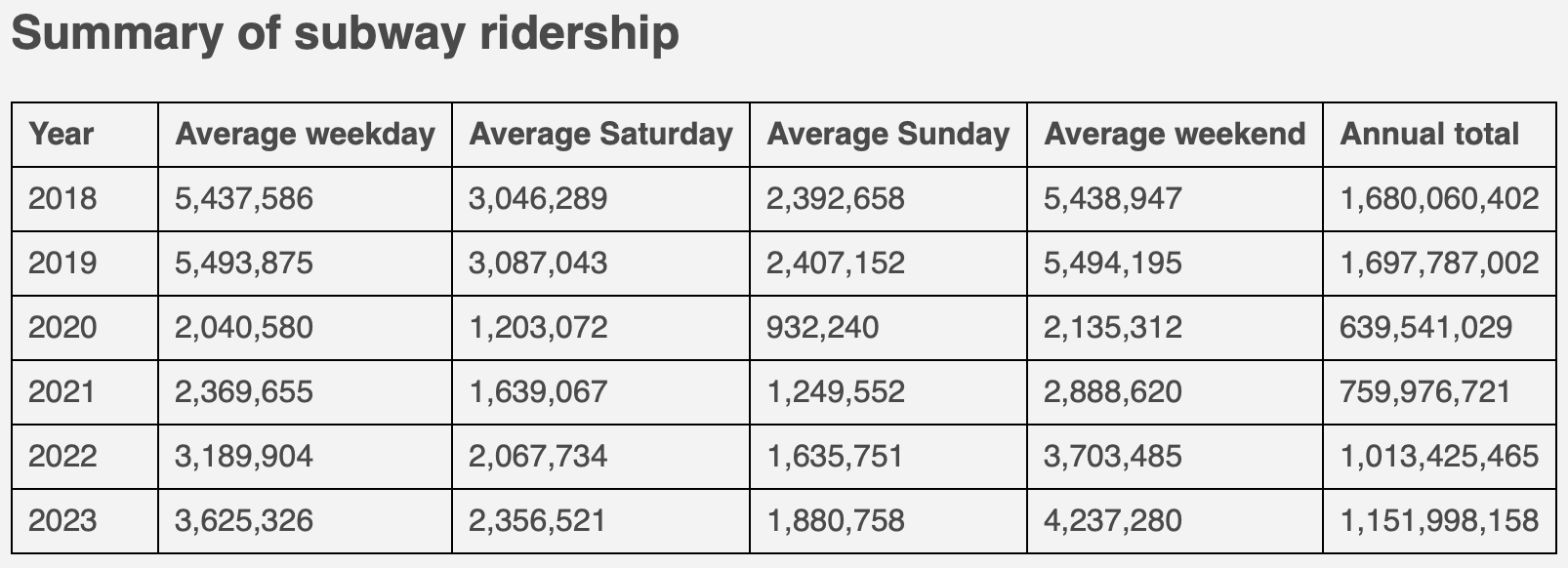
From 2018 to 2023, bus ridership fell 40.2% and subway ridership fell 31.4%. That’s a sea change of commuter habits being modified.
The impact on MTA’s Metro-North was similar, dropping about 31% per the following chart.
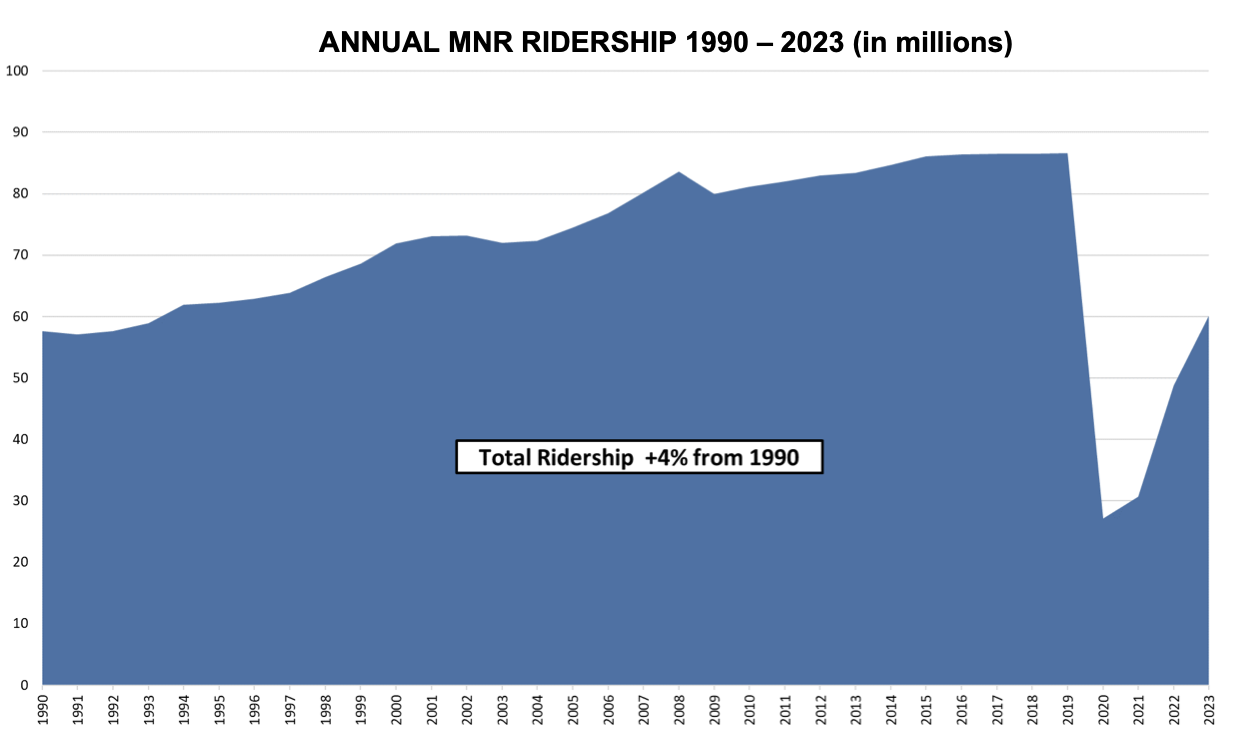
It’s only a hop, skip and a jump to infer that the sharp drop in ridership reflects a substantial shift to WFH. I can see this nearly every day when I go to a meeting and the office is substantially empty. This pattern is keeping housing prices firm and listing inventory tight outside central business districts, no matter where mortgage rates go. This is why the Kastle Back To Work Barometer measuring office use is stuck at roughly half. And this indicator is probably a lot more reliable, despite the study’s flaws (for another time), than looking at office vacancy rates because an office lease may have 10 years to got and is nearly empty due to WFH.
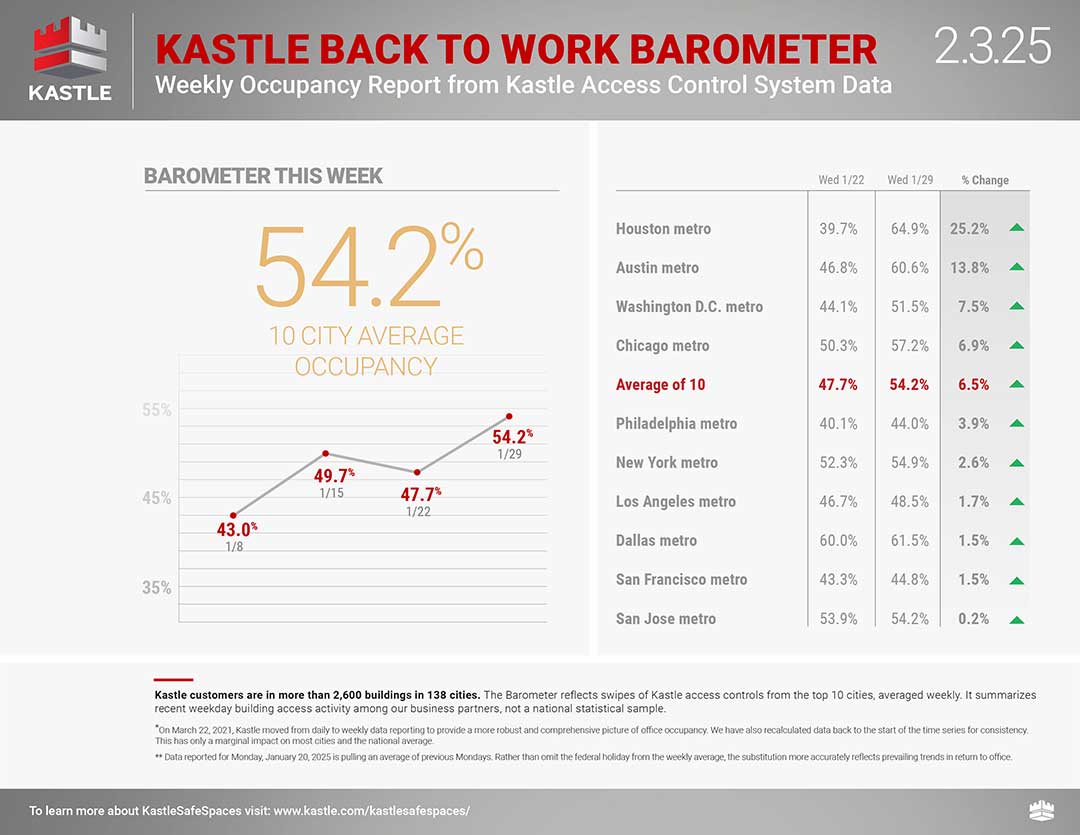
Final Thoughts
The grand WFH experiment has been around for nearly five years and employee habits have been formed and baked in. The likelihood of a 5-day a week in the office norm is illogical and driven by alternative motives coming from old-school CEOs I’ve identified above. The corporate execs calling for RTO tend to be the old guard who rose the corporate ladder around the watercooler. The next generation of CEOs likely won’t be as backward looking and the Gen Z worker cohort likely won’t put up with complete RTO.
Anecdotally, if the average hybrid worker comes in to the office 3 days per week, perhaps the average slides up to 3.5 days when the employer flexes and 2.5 days when they can’t flex. That’s what the remote work conversation is largely about. The remote work conversation is not about 5 days a week or you’re fired. While it certainly the latter example on the margin and what is televised or in your social feed, but it’s not representative of the full reality.
Speaking of anecdotal reality, here is an economic forecast, culled from the recent Super Bowl outcome.
Did you miss the previous Housing Notes?

Housing Notes Reads
- How Many Adult New Yorkers Are Secretly Subsidized by Their Parents? [New York Magazine]
- Lawsuits in DC as housing-related agencies close, rewrite rules [Real Estate News]
- How the Section 232 Tariffs on Steel and Aluminum Harmed the Economy [Tax Foundation]
- The 2018 American Steel Tariffs: Incidence, Pass-Through, and Price Coordination [SSRN]
- Who's Paying for the US Tariffs? A Longer-Term Perspective [National Bureau of Economic Research]
- Tariff Pass-Through at the Border and at the Store: Evidence from US Trade Policy [American Economic Association]
- Why Is the Square Footage in Public Records Different from the Appraisal? [Birmingham Appraisal Blog]
- Tariffs will “blow a hole” in the US auto industry, says Ford CEO [Ars Technica]
Market Reports
- Elliman Report: Florida New Signed Contracts 1-2025 [Miller Samuel]
- Elliman Report: New York New Signed Contracts 1-2025 [Miller Samuel]
- Elliman Report: Manhattan Decade 2015-2024 [Miller Samuel]


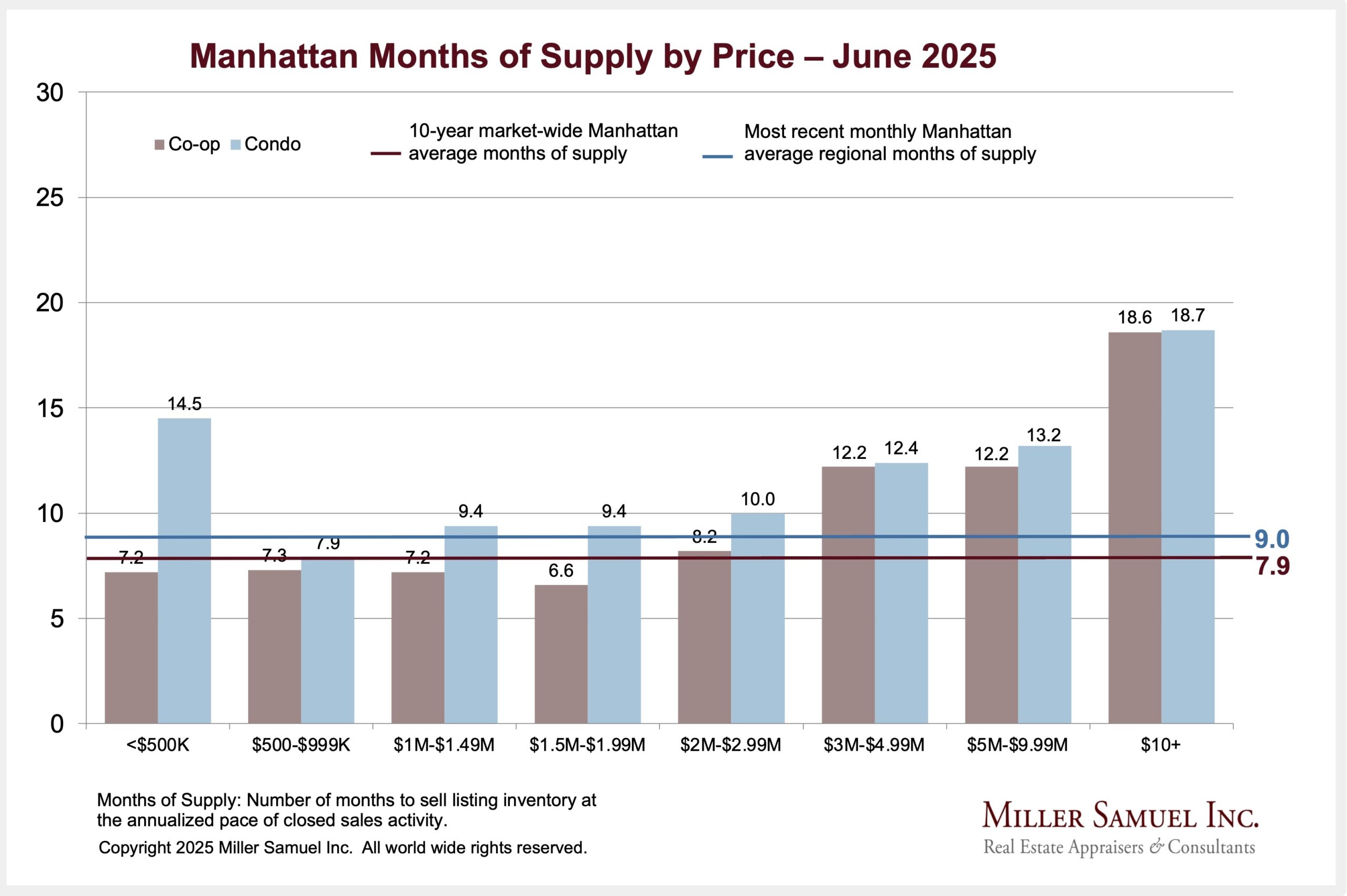
![[Podcast] Episode 4: What It Means With Jonathan Miller](https://millersamuel.com/files/2025/04/WhatItMeans.jpeg)